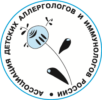Evaluation of the effectiveness of subcutaneous pollen weed polen allergens
ALLERGOLOGY AND IMMUNOLOGY IN PEDIATRICS | ORIGINAL ARTICLES
Volume 68 • Issue 1 • March 2022, pp. 16-26
Received: 04.08.2021 | Accepted for publication: 15.08.2021 | Publication date: 21.03.2022
1 Stavropol State Medical University;
2 Association Pediatric Allergist and Immunologist Russia;
Abstract
Background. In European countries, the prevalence of pollen sensitization reaches 30–40%. In Russia pollen allergy ranges from 12,7 to 38%. In the southern regions of Russia, the main one is ragweed and weed pollen. The efficacy of the subcutaneous medicinal ragweed allergen has not previously been evaluated using modern symptom scales.
Methods. Open-label, single-center, placebo-uncontrolled study of 60 patients aged 16–55 years with allergic rhinitis in combination with bronchial asthma and without it. A 2-preseason course of AIT with a subcutaneous allergen of Ambrosia was used for patients with monosensitization and an allergen Ambrosia + Artemisia (for oligosensitized patients) and Ambrosia + a mix of pollen of causal allergen for polysensitized patients. Treatment started 4 months before and stopped 2–4 weeks before the beginning of pollination. The RTSS (the rhinoconjunctivitis total symptom score) scale was used to assess the symptoms, and the DMS (Daily medical score) was used to estimate of medical treatment.
Results. After 1-st season of treatment, there was a rapid decrease in the RTSS to 5,0 [4,0; 9,0] compared to the initial values of 13 [10, 15] points. By the second year, the decline in RTSS amounted to 4,5 [3,0; 4,5] points (p <0,001), the total effect size by second course was 0,96 (strong effect of the intervention). DMS (before treatment) was 2,0 [2,0; 2,0] points, after the first and second courses — 1,0 [1,0; 2,0] points (p=0,002), with a moderate effect size of 0,67 after the first year; by the second year, the effect size is 0,75 versus baseline (p <0,01).
Conclusion. Monotherapy with a subcutaneous ragweed allergen or its combination with other allergens show high effectiveness, starting from the first course of therapy. In the second year, the improvement continues, but the dynamics decreases. The study demonstrated a strong size of the effect of medical intervention, which cannot be explained by the placebo effect.
References
1. GBD Chronic Respiratory Disease Collaborators. Prevalence and attributable health burden of chronic respiratory diseases, 1990-2017: a systematic analysis for the Global Burden of Disease Study 2017. Lancet Respir Med. 2020; 8(6): p. 585–596. doi: 10.1016/S2213-2600(20)30105-3
2. Damialis A, Traidl-Hoffmann C, Treudler R. Climate Change and Pollen Allergies. Biodiversity and Health in the Face of Climate Change. Springer, Cham. 2019. doi: 10.1007/978-3-030-02318-83
3. Bergmann KC, Heinrich J, Niemann H. Current status of allergy prevalence in Germany: position paper of the environmental medicine commission of the Robert Koch institute. Allergo J. Int. 2016; 25: p. 6–10. doi:10.1007/s40629-016-0092-6
4. Allergologiya i klinicheskaya immunologiya. Klinicheskie rekomendatsii. Pod red. R.M. Khaitova, N.I. Il’inoy. Moskva: GEOTAR — Media, 2019. (In Russ).
5. Trofimenko S.L., Rakova K.A. Pollen allergy in Rostov-on-Don. Rossiiskaya Rinologiya. 2015; 23: s. 36–39. (In Russ.). doi: 10.17116/rosrino201523136-39
6. Masalskiy SS, Smolkin YS. The heterogeneity of the causal allergens of asthma in children. ALLERGY, 2020; 75: p. 378–379. doi: 10.1111/all.14508.
7. Masalskiy SS, Kalmykova AS, Ukhanova OP, Smolkin YS, Markarova IV, Takushinova FM. Use serum periostin as marker of worsening pediatric allergic asthma. Allergology and Immunology in Pediatrics. 2018; 4(55): s. 37–48. (In Russ). https://doi.org/10.24411/2500-1175-2018-00021
8. Abramson MJ, Puy RM, Weiner JM. Injection allergen immunotherapy for asthma. Cochrane Airways Group, ed. Cochrane Database of Systematic Reviews. Published online August 4, 2010. doi: 10.1002/14651858.CD001186.pub2
9. Fortescue R, Kew KM, Leung MST. Sublingual immunotherapy for asthma. Cochrane Database Syst Rev. 2020; 9: CD011293. doi: 10.1002/14651858.CD011293.pub3
10. Barycheva LYu, Dushina LV, Medvedenko YuN. Changes in basophil reactivity and synthesis of specific immunoglobulins Е influenced by allergen-immunotherapy. Allergology and Immunology in Pediatrics. 2020; 1(64): s. 15–23. (In Russ). https://doi.org/10.24412/2500-1175-2021-1-15-23
11. Devillier P, Chassany O, Vicaut E. et al. The minimally important difference in the Rhinoconjunctivitis Total Symptom Score in grass-pollen-induced allergic rhinoconjunctivitis. Allergy. 2014; 69(12): p. 1689–1695. doi: 10.1111/all.12518
12. Bousquet J, Schünemann HJ, Togias A. et al. Next-Generation Allergic Rhinitis and Its Impact on Asthma (ARIA) Guidelines for Allergic Rhinitis Based on Grading of Recommendations Assessment, Development and Evaluation (GRADE) and Real-World Evidence. Vol. 145, 2020. doi: 10.1016/j.jaci.2019.06.049
13. Narkus A, Lehnigk U, Haefner D, Klinger R, Pfaar O, Worm M. The placebo effect in allergen-specific immunotherapy trials. Clin Transl Allergy. 2013; 3(1): p. 42. Published 2013 Dec 21. doi: 10.1186/2045-7022-3-42
14. Nelson HS. Ragweed allergy immunotherapy tablet MK-3641 (Ragwitek®) for the treatment of allergic rhinitis. Expert Review of Clinical Immunology. 2018; 14(12): p. 1003–1011. doi: 10.1080/1744666X.2018.1538788
Citation
Barycheva LYu, Dushina LV, Masalskiy SS. Evaluation of the effectiveness of subcutaneous pollen weed polen allergens. Allergology and Immunology in Pediatrics. 2022;1:4-26 (In Russ.) https://doi.org/10.53529/2500-1175-2022-1-16-26
For correspondence:
Barycheva Liudmila Yur’evna
Dr. of Sci., professor, Head of the Department of Immunology with a course of continuing professional education, Stavropol State Medical University, Russian Federation
![]()
![]()
310, Mira st., Stavropol, 355002, Russia
for_ludmila@inbox.ru
Supporting agencies:
There is no source of funding
Сonflict of interest::
S.S. Masalskiy is a member of the editorial board


This work is licensed under a Creative Commons Attribution- ShareAlike 4.0 International License
